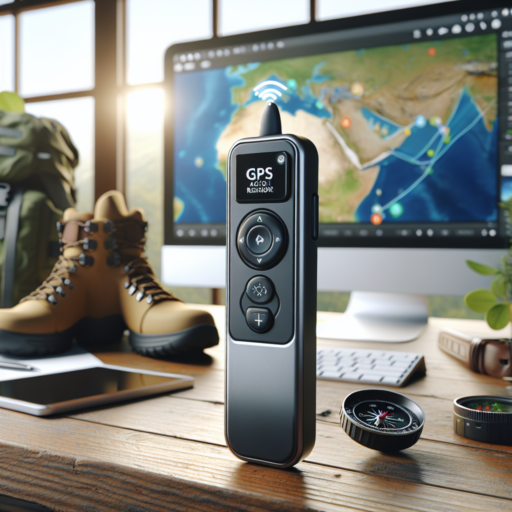Where do you put your GoPro when scuba diving?
Choosing the Right Mount for Your Adventure
When preparing for a scuba diving trip, finding the ideal spot to mount your GoPro is crucial to capturing breathtaking underwater footage. A popular choice among divers is the chest mount, offering a steady, hands-free option that provides a viewpoint similar to your own. For those looking to capture more dynamic angles, attaching the GoPro to a head strap or directly to your diving mask can provide a first-person perspective, immersing your audience directly into your underwater journey.
Utilizing GoPro Accessories for Enhanced Stability
Incorporating GoPro’s wide array of accessories can significantly improve your filming experience. The Floating Hand Grip, for instance, not only ensures your GoPro stays afloat if dropped but also enhances stability while recording. Dive housing accessories are designed to protect your device at great depths, making them essential for deep-sea explorations. By leveraging these tools, you can ensure your GoPro is securely mounted and safeguarded against the pressures of the deep blue.
Hands-On or Hands-Free: A Comparative Insight
Deciding between a hands-on approach versus a hands-free setup depends largely on your diving style and what you hope to capture. A telescopic pole or selfie stick can be perfect for selfies or capturing close-ups of marine life without disturbing their natural habitat. Conversely, mounting your GoPro on your equipment, such as on the top of your tank or alongside your flashlight, can offer unique angles that free your hands for navigating the underwater terrain. Each method provides its own set of benefits, allowing for a customizable filming experience tailored to your diving adventure.
Do you need a dive case for GoPro?
When considering underwater photography or videography, the question of whether you need a dive case for your GoPro is essential. The necessity of a dive case for your GoPro depends largely on the depth of your dive and the specific model of your camera. While some GoPro models are waterproof on their own, going beyond certain depths without additional protection can be risky.
Modern GoPros, such as the Hero8, Hero9, and later versions, come with inherent waterproof capabilities. However, these are typically limited to depths of 10 meters (33 feet). For casual snorkeling or shallow water dives, this might be sufficient. But for deeper dives, the pressure increases significantly, and this is where a dive case becomes invaluable. A high-quality dive case can extend the waterproof capabilities of your GoPro up to 60 meters (196 feet), ensuring your camera’s safety and functionality.
Aside from providing the necessary waterproofing at greater depths, a dive case also offers added protection against physical damage. Sharp rocks, corals, and even accidental drops can easily damage your GoPro. Dive cases are designed to withstand not only water pressure but also physical shocks and scratches, making them a worthwhile investment for any serious underwater adventurer.
No se han encontrado productos.
Which GoPro is best for scuba diving?
When it comes to capturing the mesmerizing beauty of the underwater world, GoPro cameras are among the top choices for scuba divers. Their robust build and exceptional waterproof capabilities make them ideal companions for exploring the depths of the ocean. However, with several models available, choosing the best GoPro for scuba diving can be somewhat challenging.
Top GoPro Models for Scuba Diving
The GoPro Hero 9 and Hero 10 stand out due to their superior features suitable for underwater adventures. Both models boast incredible image stabilization, making them perfect for capturing smooth, high-quality video amidst the unpredictable movements of the sea. Additionally, their waterproof rating without a housing is impressive, but to reach greater depths that scuba diving often involves, using a dive housing is advisable to ensure the camera’s safety and functionality.
One of the key considerations for scuba divers is video quality. The Hero 10, with its ability to shoot 5.3K video at 60fps, offers unparalleled clarity and detail, ensuring that every underwater moment is captured with striking vividness. Moreover, the Hydrophobic Lens Cover on the Hero 10 enhances its performance under water by repelling water off the lens, ensuring clear, droplet-free footage.
In conclusion, while both the GoPro Hero 9 and Hero 10 are excellent choices for scuba diving, the Hero 10 edges out slightly with its advanced features tailored to capturing the underwater world in all its splendor. Divers looking to immortalize their underwater adventures in stunning detail will find the Hero 10 to be the ultimate tool for the job.
What are the best GoPro settings for scuba diving?
Finding the optimal settings for your GoPro camera can significantly enhance the quality of your scuba diving footage. When diving, light conditions can vary greatly depending on depth and location. It is crucial to adjust your GoPro settings accordingly to capture the mesmerizing underwater world in all its glory.
Firstly, setting your GoPro to Protune mode is essential for scuba diving. Protune allows for higher quality videos and more manual adjustments that can be fine-tuned during post-processing. For the best balance between quality and file size, recording in 1080p at 60fps is recommended. This frame rate is perfect for capturing smooth movements without overloading your memory card.
Color Correction and ISO Levels
In underwater settings, adjusting the White Balance is crucial. A setting of 5500K for blue water and 6500K for green water helps in compensating for the loss of colors, especially red, which diminishes as you go deeper. The ISO limit should be set as low as possible, preferably around 400, to avoid grainy footage, especially in deeper or darker waters. An ISO limit prevents the camera from automatically selecting a higher ISO in low light, which can result in lower quality video.
Utilizing these settings will undoubtedly improve the quality of your GoPro footage under the sea. Remember, each diving location may require tweaks to these settings, so it’s always best to do a test run before your actual dive.




